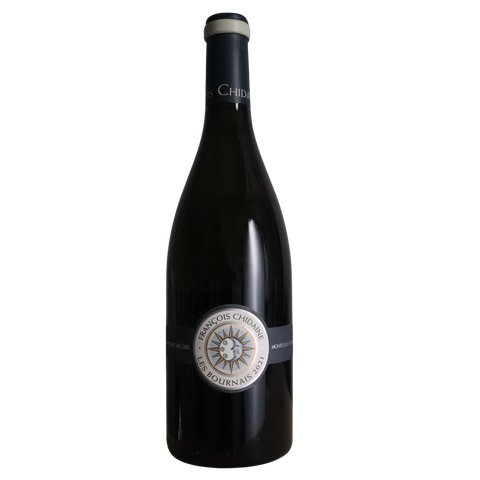
2023 Domaine François Chidaine Montlouis-sur-Loire "Les Bournais", Loire Valley, France
There are 5 units left in stock.
ABOUT THIS WINE
On a limestone plateau overlooking the Loire river sit Les Bournais, a vineyard Chidaine refers to as "a magical place". It had been abandoned for some time, but Chidaine was convinced that it was one of the very best sites in Montlouis, and planted vines here in 1999. Unlike most of Montlouis, which is on clay and silex, or flint, Bournais lies on clay and limestone, and the name Bournais refers to the particular type of limestone found here. Chidaine’s goal is to vinify this dry, barring the occasional aberration such as 2005, and the result is a powerful, full-bodied wine, probably the closest to Vouvray in profile of all Chidaine’s Montlouis wines.
ABOUT THIS PRODUCER
Montlouis is an appellation of 400 hectares located directly across the river from Vouvray. In fact, until it was granted AOC status in 1937, Montlouis wines were produced under the Vouvray appellation. The soils in both places are quite similar: sandy clay on a base of tuffeau. Some say that a slightly higher percentage of sand and pebbles in the Montlouis soils makes the wines a bit leaner than the wines of Vouvray. For us, this trait adds to the charm of Montlouis's sec wines, giving them a lively crispness on the palate and outstanding minerality.
François Chidaine worked alongside his father Yves for many years before setting out on his own in 1989. Convinced of the potential of the teroirs of Montlouis and Vouvray, he purchased assorted parcels and expanded the estate to today's total of 30 hectares of Chenin Blanc, many of which are dominated by old vines of 40 to 80 years of age. During these years of growth, Chidaine earned a reputation as a leading natural viticulturalistin the region. Today, he is devoted to what is referred to in the U.S. as "regenerative agrcitulture", which involves implementing practices that are known to improve the rate at which CO2 is removed from the atmosphere and converted into plant material and soil organic matter (squestering CO2 in the soils). At the heart of this approach is a practice of "no-till" farming. While plowing is an integral part of natural viticulture for many farmers and producers, this disruption of the soil is thought to interfere with the complex mycorrhizal network (funghi network) that actually connects individual plants together and transfers water, carbon, nitrogen and other nutrients and minerals between them. After years of working his soils, François developed a belief that by plowing he was sabotaging these important communication networks which help to give the vines what they need to flourish. An essential aspect of regenerative farming is the establishment of permanent cover crops between vine rows. Francois encourages biodiversity by embracing the growth of indigenous plants and sowing over 25 additional species among the vines. By mimicking nature, the vines find their place in a complex ecosystem, allowing them to better express their place of origin.
This progressive vision isn't simply about growing the best grapes possible, but rather a vision for the future. In François' words, "this is how we save the world" (not to mention other proponents, of course). It is estimated that as much as one-third of the surplus CO2 in the atmosphere that is causing climate change has come from agricultural and land management practices. Through organic and biodynamic farming, Francois never saw the results that he is now seeing in his soils and vineyards. But he admits that he is thankful he took those paths since they led him here, and he hopes others will join him.
At the Domaine, François is a true champion of the Chenin Blanc grape and touts its ability to produce vibrant wines that age gracefully. He is happiest in his vines, but being among his barrels is a close second. In many circles, François is as respected a vinifier as he is a vigneron. He produces an entry-level line of Touraine wines -- Clos de la Grange Sauvignon Blanc, Touraine Rosé and Touraine Rouge -- all of which overdeliver at their value price points. Two sparkling wines serve as an excellent introduction to Chidaine's various expressions of Chenin: a Méthode Traditionnelle made with grapes from younger vines in Montlouis that spend 12 months on the lees, as well as a Petillant made from Vouvray vines that aged 36 months sur lie.
Details:
| Grape(s) | Chenin Blanc |
| Farming | Biodynamic |
